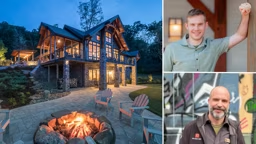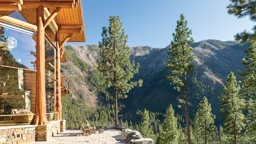
Nowadays you can find everything online, including thousands of house plans for your future home. From timber companies' websites to searchable sites that sell plans for any style of house, you can filter through your options by square footage, number of bedrooms, number of levels— you name it.
The one thing you typically can't search by, however, is climate— an important consideration when designing any custom house. Among the environmental factors that can affect a floor plan are maximum and minimum temperature; annual rainfall and snowfall; and average wind speed. Because these elements vary, a roof system that works find in Texas, for example, may not cut it in a state like Minnesota that faces heavy snow storms. And a house built in the open plains of the Midwest should be built to withstand high winds, a factor that might not matter to homes built in New England.
See also Simple Additions on Your Timber Home
To create a home that works well for its unique location, consider these areas during the design phase:
Site & Orientation
In a colder climate, a south-facing slope — the best orientation for maximizing winter sunlight — is ideal. In a climate with high annual temps, however, a south-facing orientation could overheat your home. A site where your main living areas could face away from the hot sun would be a better choice.Foundation Depth
The footings of most foundations are placed below the maximum frost depth. In Florida, a slab on grade makes a perfectly good foundation while northern states require foundations that begin at least four or five feet below grade.Roof Overhangs
Roof overhangs provide shade. In very hot climates, many designers specify a hipped roof, since a hipped roof with wide roof overhangs will keep the sun off the windows on all four sides of the house. In very rainy climates where water and moisture can contribute to siding rot, deep roof overhangs will protect your exterior walls and foundation. In dry climates that aren’t very hot, roof overhangs are much less important.Roof Materials
In a hot climate, builders may wish to specify white-colored roofing or a so-called “cool roof” with high solar reflectance and thermal emittance. In cold climates, on the other hand, dark roofing may be preferred because of its ability to help melt snow. While clay tile roofing and concrete tile roofing are fairly common in southern California, these types of roofing are quite rare in cold, snowy climates where homeowners often battle ice dams with hatchets.Windows
Windows affect the energy use of homes in at least two ways: when the sun hits a window, it warms up the home’s interior; and on cold cloudy days and cold nights, a window provides a path for interior heat to escape quickly to the outdoors — more quickly than heat would escape through an insulated wall. If your climate is cold and cloudy, you’ll probably want to think twice before specifying large windows, especially on the east, west and north elevations of your home. In a hot, sunny climate, you’ll definitely want to minimize the area of your east-facing and west-facing windows, but north-facing windows may not cause many issues.See also Wall & Roof Options for Timber Frame Homes











